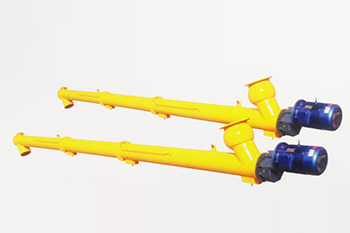
The rotating helical blade pushes the material for spiral type conveying. The force that prevents the material from rotating together with the screw conveyor blade is the material's own weight and the frictional resistance of the screw conveyor casing to the material. The spiral blades welded on the rotating shaft of the screw conveyor have different surface types according to the conveyed materials, such as solid surface type, belt type surface type, and blade surface type. The screw shaft of the screw conveyor has a thrust bearing at the end of the material movement direction to give the screw axial reaction force with the material. When the length of the screw conveyor is long, a Zhongjian suspension bearing should be added.
The screw conveyor is generally composed of three parts: the conveyor body, the inlet and outlet, and the driving device; the screw blades of the screw conveyor have three forms: solid helicoid, belt helicoid and blade helicoid, among which the blade helicoid is used Relatively few, it is mainly used for conveying high viscosity and compressible materials. This helicoid type has and completes the functions of stirring and mixing materials during the completion of the conveying operation.
Compared with other conveying equipment, the screw conveyor has the advantages of small overall cross-sectional size, good sealing performance, stable and reliable operation, multi-point loading and unloading in the middle, safe operation, and easy maintenance.